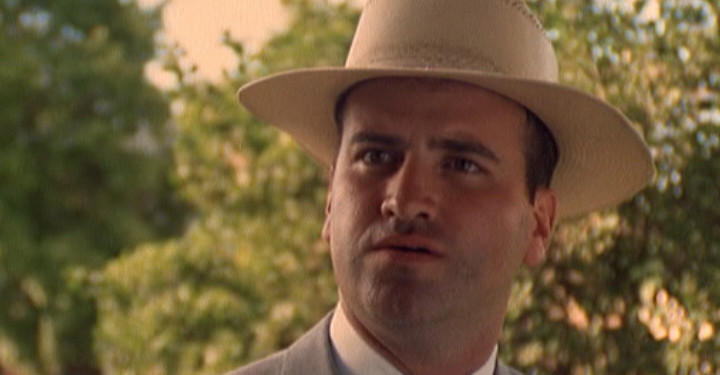The recent release of another movie by Terrence Malick has had me thinking about his career progression. Let me preface all of this by saying that I am a huge fan and have tremendous respect for both his technical and emotional film-making talents. Soon after Malick graduated film school he made Badlands and followed it up five years later with Days of Heaven. Both of these films showcased his signature style, but were relatively disciplined compared to his later work. They featured the trademark narration and natural light cinematography, but had actual plotlines. After this period, he went off to Paris and escaped the public eye. It was 20 years later in 1998 that his next movie, The Thin Red Line, was released.
The 20 year gap had a profound impact on the films he would later produce. Because of the incredible critical success and originality of his first two films, he developed a cult-like following and because of his absence he became not only an auteur, but also a recluse. This only compounded his respect in the film world, so when he did finally return it was like a second coming. The great elusive filmmaker Terrence Malick came back to Hollywood to save cinema. Malick had access to a significantly larger budget and any actor he could ask for. He probably cut out more A-list actors than most films are able to cast.
While this would be a great boon to any director, it also came with an increased level of freedom. It’s easy to think that more freedom to a creative like Malick would lead to a better film, but it is my belief that great works are the result of creative tension. I don’t believe in the unfettered auteur, that if only people (studios, producers, actors, etc.) would just listen and do exactly what a director says, the film would turn out great. No, instead, it is the dissenting opinions that prevent originality from becoming excess and stylistic flair from becoming indulgence.
Fortunately, the real world events that inspired his first three films after the gap kept Malick on solid ground. The Thin Red Line, The New World, and The Tree of Life were all his interpretations of historical events namely the Battle of Mount Austen during WWII, the story of John Smith and Pocahantas, and Malick’s own childhood, respectively. There were stil some excesses as runtimes increased and actors became less and less important compared the natural imagery. Yet, the plotlines from these historical events focused the existentialism imparted by the characters. This is particularly true of The Tree of Life where the deeply personal story made the abstract structure more approachable.

However, starting with To the Wonder, Malick broke away from any sort of reality. Working again with same team as his previous film, he was given even more autonomy over the production and it shows. Neither To the Wonder nor Knight of Cups has a clear plot or theme. In The Tree of Life, the plot jumped from present day to the beginning of time to 1950’s Texas to the end of the world, but it was able to do so because these leaps had a purpose. They were all a part of the core emotion of the film: coping with the loss of a loved one – a very relatable and immediately sympathetic situation. What emotion was either of his past two films supposed to explore? Therein lies the problem. There was no main theme or contained set of emotions that they discussed. Instead they were collections of disparate, often fleeting feelings strung together.
Without something connecting these thoughts, his films have become meandering and ultimately meaningless. This is clearly evidenced by the staff needed to complete post-production. Both Badlands and Days of Heaven were edited by a single person, but his later films needed several editors (3, 4, 5, 5, and 3, respectively) to produce something releasable. He is allowed to continue shooting ungodly amounts of video and likely has to because he doesn’t have a plan for where his film is headed and doesn’t know what shots he actually needs. Then, he and his team of editors attempt to construct something out of the countless hours of footage, sometimes spending years doing so.
What this means is Malick needs to be reined in. He needs to take more time and find collaborators, not just co-workers. Being true collaborators means working both with and, equally importantly, against each other – regardless of any previous critical acclaim. A producer, writer, actor, or at least one out of his army of editors needs to set boundaries for Malick to force him to create some sort of structure or cohesive vision for his films. With the upcoming Weightless and Voyage of Time, Malick will likely release more films in this decade than the previous four. In the meantime, I hope that he and his team can be honest and critical of their recent releases to improve the quality of their next films. Terrence Malick will always be an amazing director, let’s just hope he can return to making amazing movies.
